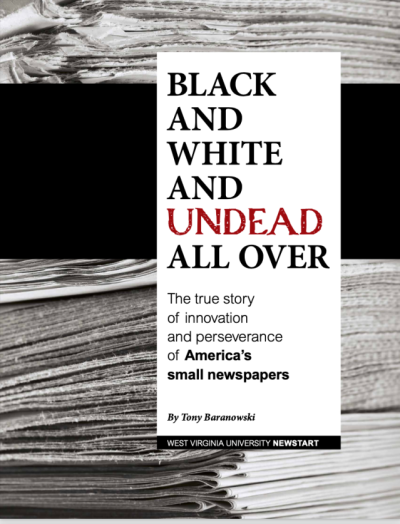
When I wrote last week that the nonprofit National Trust for Local News had sold 21 of its Colorado newspapers to a corporate chain called Times Media Group, I observed: “I honestly don’t know what kind of reputation the company has. But it’s ironic that a nonprofit founded as an alternative to chain ownership has found it necessary to cut a deal with one of those chains.”
Well, now. According to Sarah Scire of Nieman Lab, the chain, which owned some 60 papers in California and Arizona before the Colorado deal, has reputation for “gutting” its properties. Scire writes:
The Times Media Group is, to put it mildly, an odd choice of buyer for the mission-driven National Trust for Local News. The Trust is a nonprofit that has emphasized the importance of local control for local newspapers and describes community newspapers as “vital civic assets.” The Times Media Group is an out-of-state, for-profit media company with a history of reducing local newsrooms.
Colorado media-watcher Corey Hutchins calls Scire’s article “the Nieman Lab story heard ’round Colorado.”
The papers that the Trust sold off are in the Denver suburbs; the nonprofit is retaining seven other papers in more rural areas, where it says the news desert problem is more acute. Among those laid off was Linda Shapley, the editorial director of Colorado Community Media (CCM), the umbrella group for the Trust’s papers before the selloff. I interviewed Shapley for our book, “What Works in Community News,” and she’s been a guest on our podcast.
Last week I tried unsuccessfully to connect with Jerry and Ann Healey, who sold CCM to the Trust in 2021. Jerry Healey did talk with Hutchins, telling him that he “kind of bought into their [the Trust’s] vision,” adding, “But after a while, I realized that it wasn’t working.”
In September 2021, I interviewed the Healeys at a coffee shop just outside of Hartford, Connecticut. They were there to visit their daughter, who worked for ESPN. They had sold their papers to the National Trust just a few months earlier, and at that time they were hopeful they had left their legacy in good hands. I interviewed Shapley at CCM’s headquarters in Englewood, Colorado, the following week.
What follows is an except from “What Works in Community News,” which I co-wrote with Ellen Clegg.
***
David Gilbert, a reporter with Colorado Community Media (CCM), was summoned into publisher and co-owner Jerry Healey’s office one day in the spring of 2021. “I’ve got news for you,” Healey told him. “I’ve sold the papers.” Healey wanted Gilbert to write the story about the transaction. CCM published 24 weekly and monthly newspapers in Denver’s suburbs. Gilbert, who’d been on staff for four years, imagined the worst — namely, a corporate chain owner was coming in that would slash costs and eliminate jobs. His first thought, he said, was “Oh, crap, time to pack up my things. I wonder if I can get my job back driving a truck.”
Continue reading “At Colorado Community Media, the optimism of 2021 has given way to bitter reality”

